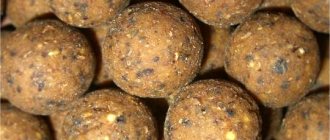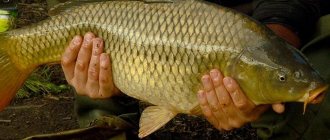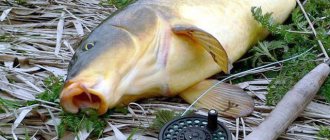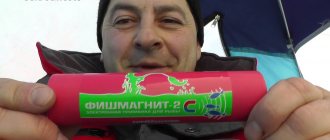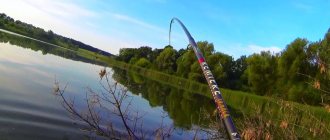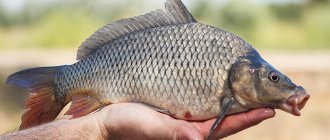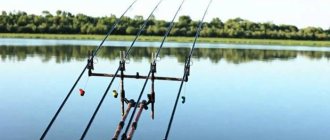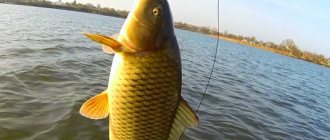"Pellets for carp." Every experienced carp angler knows that to successfully catch carp, you need to feed it well, and most standard store-bought mixtures and baits prepared on the basis of cereals are not entirely suitable for attaching carp. Or rather, they are only suitable for catching small specimens.
Medium and large-sized fish instantly sweep away loose bait and swim away from the desired place. To keep the fished object on the “table” (the bottom area covered with bait), the bait must contain large granules.
Therefore, experienced carp fishermen add pellets to the bait.
Pelets for carp - What is it?
Pellets are nothing more than granulated food for industrial feeding of carp fish. Pellets were developed as an alternative to conventional crumbly mixtures. Why did the switch from crumbly feed to granular feed occur?
"Pellets for carp"
There are several reasons for this. Firstly, you can vary the composition of the granules, achieving the desired nutritional value and calorie content.
Secondly, pellets allow you to control the feeding process. And thirdly, large granules become inaccessible to small, trash fish that live next to the carp.
After pellets became widespread and proved their attractiveness to carp, the idea of using large pellets as bait was picked up by sports fishermen, and then by amateurs.
At the moment, pellets are actively used as the main component of bait for carp, its domesticated relative and grass carp. It has become a budget alternative to boilies, which can also be used as a complementary feeding supplement.
Pelets for carp - Types of granulated food
Pellets can be instant and slow soluble. The latter is often called fatty, or filling granules. As their names suggest, these two types of pelleted food differ in how quickly they break down in water. But this is not the only difference between them.
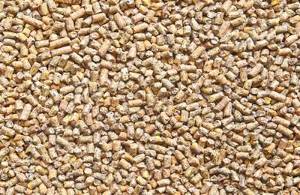
"Pellets for carp"
Instant pellets are produced by dry pressing. The main ingredient is crushed grain mixtures.
Additionally, high-protein substances are added to the feed, which are necessary for the normal growth and development of fish.
To make granular food attract fish faster, odorous substances such as anise or hemp can be added to it.
Due to the fact that instant pellets are pressed using the dry method, they quickly absorb water, swell and disintegrate. If you pour such granules onto the bottom, then after 30-40 minutes the soil will be covered with an even layer of bait.
Instant granular food generates a lot of dust, flavors quickly spread in the water, so such granules quickly attract fish to the right place. But due to its low calorie content and excessive friability, such pellets are not able to keep carp in one place for a long time.
In order for the fish to stay at the point, you need to make sure that the carp savors the large granules for a long time. And for this, slowly dissolving pellets are ideally suited.
What are pellets, history of development and types
“Pellets” or “pelets” are special pressed cylindrical granules, similar to tall tablets. Sometimes shorter pellets of various shapes are found. Conventionally, they can be called a subtype of boilies, but the texture of balls is more monolithic. Fishing “Tablets” are more reminiscent of a “spraying” structure. The granules consist primarily of herbal ingredients, tailored to the fish's preferences.
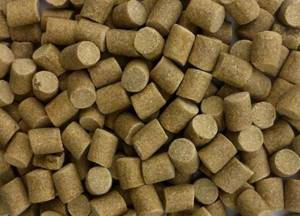
Pellets without holes. Pellets. This name has nothing to do with its fishing origins. This is the name given to granules for any purpose that have this appearance. Fuel, fishing, feed pellets.
Initially, pellets were exclusively forage; they were used on trout farms. They took the bag and simply threw it into the water. Resourceful businessmen who know a lot about fishing picked up this method and decided to start producing similar pellets for catching many species of fish, including those living in wild reservoirs.
The development of “tablet” production did not stop only at feed products. The developers presented attachment options, both for currents and for standing waters! Today's pellets differ in the following parameters:
- color. Some fishing conditions force the inhabitants to prefer bait and bait not only in taste, but also in color,
- dissolution rate – for flow and for standing water,
- size. There are pellets designed for small and large mouths, which gives the fisherman the opportunity to go specifically for trophies of a certain size. Standard sizes – 3, 4, 6, 8, 14 and 21 millimeters,
- compound. It is selected according to the preferences of one or more fish species,
- application. There are ready-made wet granules, they are placed in jars - you can immediately plant them. And there are also “semi-finished products” that should be pre-soaked,
- behavior in water. Like boilies, pellets produce both sinking and floating ones.
- purpose. We're talking about gear. Many manufacturers produce dumplings specifically for feeder feeders, for example,
- presence or absence of flavorings.
Fat granules
Slow dissolving granules are made from fatty, high-protein mixtures.
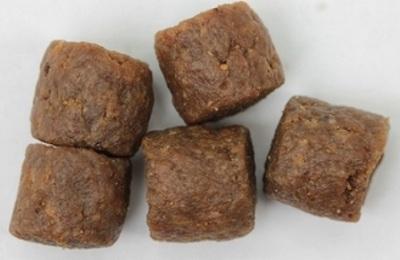
"Pellets for carp"
One of the main components is fishmeal. It itself has an attractive taste and aroma.
When preparing granules, they contain a large amount of binding components, which are pre-moistened before pressing.
As a result, the pellets are very dense, which facilitates long-term dissolution in water for several hours. Due to the high satiety and density, the carp sucks on the granules for a long time, standing at one point.
The fisherman will no longer need to frequently add new portions of bait, scaring away the fish with loud splashes on the surface of the water.
What pellets to use for carp fishing
For carp fishing in the summer, pellets with a high fat content are suitable, usually trout and halibut pellets. It is most effective for fishing in the warm season.
This is due to the high content of fat and oils in their composition, which are attractive to fish, are a valuable resource, and in warm water they reveal their aroma most effectively.
This pellet is not effective when fishing in cold water, since the oil in it hardens and there is no aroma from them.
During the cold seasons, spring, fall and winter, the most effective pellets are those with low oil content, such as hemp, or with corn syrup (CSL).
The pellets can be soaked in a variety of flavorings, or can be doused with boiling water and mixed with powdered additives such as cornmeal, fishmeal, or dried garlic powder.
When making bait, you can mix granules of different flavors and sizes, often this gives a positive effect and result.
Recommended: How to choose a good silicone soft bait
You can select the required pellets, for example, in.
What else should you pay attention to?
When choosing pellets, you need to pay attention not only to the speed of its dissolution in water, but also to:
- Size;
- Shape;
- Smell;
- Color.
Size
Granules can be either small or large. The rate of decomposition of bait in water directly depends on the size of the granules.
By increasing the size of the granules, you can cut off small fish and purposefully catch only trophy specimens.
If you prefer active and dynamic fishing, then you need to do the opposite - reduce the size of the pellets. Then a lot of small carp will quickly gather at the point, which will delight you with a large number of bites.
Form
The shape of the granules can be cylindrical or spherical. Cylindrical pellets are more common and cheaper because they are easier to produce. Pellets in the form of balls, which are often confused with boilies, are more difficult to obtain, so the cost of such baits is slightly higher.
If you plan to use pellets exclusively for feeding, I advise you to buy regular cylindrical pellets. But if you use it as bait, you should give preference to balls, because... they have better aerodynamics and do not flutter much when casting.
Smell
Feed pellets, which are produced for the needs of fish farms, as a rule, do not have any aromatic additives. But granules produced by fishing companies for recreational and sport fishing contain flavorings:
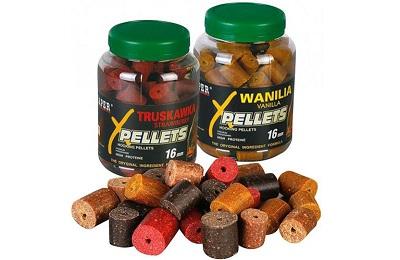
Vanilla.- Chocolate.
- Banana.
- Strawberries.
- Hemp.
- Anise.
Are flavored mixtures always superior to naturally scented foods? As experience shows, no. In heavily pressurized reservoirs, carp get used to atypical odors and begin to directly associate them with danger. Moreover, this applies not only to those fish that were hooked, but also to other individuals.
Recent research by ichthyologists proves that fish have a highly developed collective consciousness, and individuals are capable of transmitting anxiety to each other.
Color
Various dyes are often added to pellets to give the granules a certain color. For carp, it is not so much the color itself that matters, but its contrast with the bottom.
The bait can either blend into the ground or stand out on it. It is impossible to say with certainty which option is better, because... The behavior of fish in different ponds varies greatly. You just need to experiment.
Making pellets yourself
Many fishing enthusiasts ask the question: “Is it possible to make pellets at home, and will its properties differ significantly from factory-made pellets?” It is important to remember that the process of preparing homemade pellets is practically a science, allowing the prepared pellets to become truly magical, and the fishing results to constantly delight the fisherman.
Read more
Wobblers from Salmo
The first stage is preparing a special “dough”.
When choosing components, adding or excluding individual ingredients, you must not violate the recommended percentages between the main components:
- Feed base – 40%.
- Hemp (sunflower) seeds, roasted and ground – 20%.
- Crushed cookies –20%.
- Powdered milk (milk protein) –10%.
- Powdered loam –10%.
To increase shelf life, add approximately 50 grams of salt, as well as a small amount of flavoring if desired. The resulting mixture of dry ingredients is steamed with a small amount of hot water (at the rate of 50 ml per 400 grams of mixture), and after 5-7 minutes the dough is kneaded, wetting your hands in olive oil and, if necessary, adding warm water a teaspoon at a time, kneading well after each additions.
Next, the process of forming granules of the desired shape will occur. There are several cooking methods:
- labor-intensive - rolling the dough into sausages of the required diameter, which should be cut after drying for a short time;
- rolling out on boards specially designed for this purpose (boilie boards).
- the use of modified meat grinders without knives and holes in the mesh of the required size;
- The author's method is to use a pastry syringe with a nozzle or a used, pre-well-rinsed, tube of silicone with a construction gun.
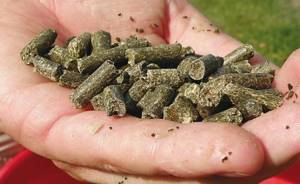
And the last stage is final drying, possibly even using an oven. The drying time is determined by the presence of binding components in the pellets, such as, for example, gelatin. Further, in order to increase the time spent on the hook, the granules are impregnated with oil or fish oil.
Recipes
In the matter of preparing pellet bait, as we know, as many fishermen as there are recipes, obtained, most often, experimentally.
One of the recipes, the components of which must be observed in weight ratio:
- Breadcrumbs – 35%.
- Crushed oatmeal cookies –10%.
- Oatmeal – 10%.
- Oatmeal – 10%.
- Ground flour – 10%.
- Powdered milk – 5%.
- Corn flakes – 10%.
- Bran – 10%.
Preparation of dough from dry ingredients - steaming, kneading and shaping - takes place according to the previously described algorithm.
Another recipe for pellets implies that the process of forming granules will take place on a boilie board.
In this version, the dough should be more plastic than in the previous version:
Read more
What types of jigs are there?
- Ready-made bait for fish – 600 grams.
- Soy flour (can be replaced with semolina) – 200 grams.
- Ground roasted hemp – 50 grams.
- Dry ground clay – 150 grams.
The addition of clay not only makes the mixture more flexible, but also makes it heavier, which facilitates long-distance casting of such a bait. The dissolution period of such granules increases to 1-2 hours.
Feeding tactics
The ideal tactic for feeding carp fish with large granular food looks like this. At the very beginning of fishing, you need to choose a place where you will attach the fish. After this, it is necessary to deliver instant granules to the point. They will ensure that fish are quickly attracted to the table.
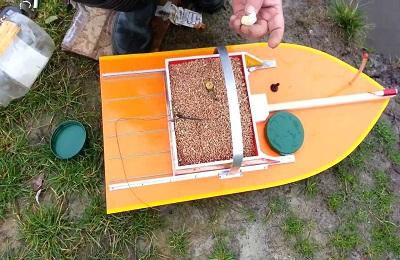
It is best to deliver the mixture to the point with a special bait boat or boat.
If you don’t have either of these, you can use special large rocket feeders. But this method is not the best, because... does not allow delivering a lot of bait to the point at one time.
The time of the feeding session increases, and as a result, the granules delivered to the point at the very beginning may completely disintegrate by the final cast.
Once the amount of pellets you have chosen is on the bottom (on average, this is 20% of the total volume of all prepared bait), you need to start fishing. After about an hour, you need to begin the main stage of feeding the carp.
Usually during this time the fish manages to pull itself up to the point and eat more bait. Now our task is to deliver fatty, nourishing granules to the table, which will allow you to concentrate fish for a long time near the equipment with bait.
As in the previous case, it is best to feed from a rubber boat, or using a radio-controlled boat. This way you won't scare away the fish.
Carps Pellet
This is exactly the category of pellets that we need for catching carp with pellets. Yes, for the most part they are intended for these fish, but you can also catch other representatives of this family with them. The manufacturer no longer uses “trout” ingredients, which can overfeed the fish. Carp pellets contain components tailored to the preferences of the target inhabitant.

Another effective granule is considered to be pellets containing chopped red worms.
IMPORTANT! During the production of such dumplings, manufacturers also add special substances that awaken the fish’s appetite, but do not allow them to eat.
Carp pellets dissolve well in water, and the tiny particles create a seductive trail. Bait options are scattered in squares, approximately 10 by 10 meters. They are delivered over long distances using “missiles” (an opening feeder), slingshots and boats. Possible from a boat.
Pellets as bait
Probably, many readers are tormented by the question: “Is it possible to use large feed pellets as the main bait?” Yes, sure! And it’s not just possible, but even necessary. Pellets are an excellent alternative to boilies, and in some cases they are even superior to them in terms of catchability.
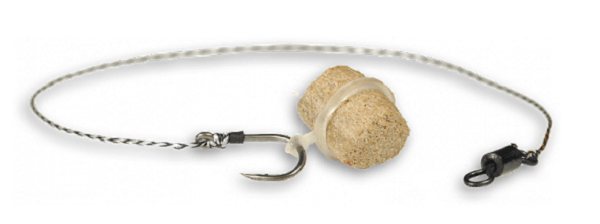
Pellets nozzle
Now on the shelves of fishing stores you can find special bait granules of round and cylindrical shape. They already have a through hole, allowing you to easily mount the bait on the hair rig. But if you couldn’t find granules with a hole, it’s okay. You can drill through the pellets with a thin drill bit using a hand or electric drill.
If you have not yet tried fishing with coarse-grained feed mixtures, I advise you to correct this disgrace. I guarantee that you will be satisfied with the results of your fishing trips. No tail, no scales!
Advantages of pellets nozzle
- It is nutritious and environmentally friendly - it is made from natural ingredients, many of which we, feeders, usually feed fish. And therefore, pellets are accepted by carp and other inhabitants of water bodies without fear.
- It is attractive and catchy - its dough base is familiar to fish, but it is also enhanced with nutritious protein additives and has an interesting smell and taste. Pelitz is a bait that even cautious carp or bream will not be able to swim past.
- It behaves well in water - it does not spread, even if you keep it in water for a long time. A high-quality pellet only swells slightly, which gives it elastic properties - such a pellet will not be taken away by small fish. At the same time, an attractant is released into the water - an aroma that attracts large prey from afar.
- Convenient to use - such a granule can be effortlessly hung on a hook in a second, it is soft enough for quick installation. Many commercial pellets today come with a through hole. Manufacturers immediately make sure that their baits easily and firmly cling to hooks.
- It goes well - it can be combined to make original “sandwiches”. So, when catching predatory fish, a combination of dumplings with bloodworms or a worm works well, and when catching peaceful fish, with corn. Other options are possible - there is room for experimentation.
Today you can make pellets yourself using the rules for preparing groundbait and groundbait.
This is an opportunity to bring to life an original recipe that will become the secret to your good catch. Although it is much easier to just buy pellets, especially since there are enough decent options. As an example, we can cite the nozzles N-Cage, Marine, Traper - they are freely available, are relatively inexpensive and give results.
